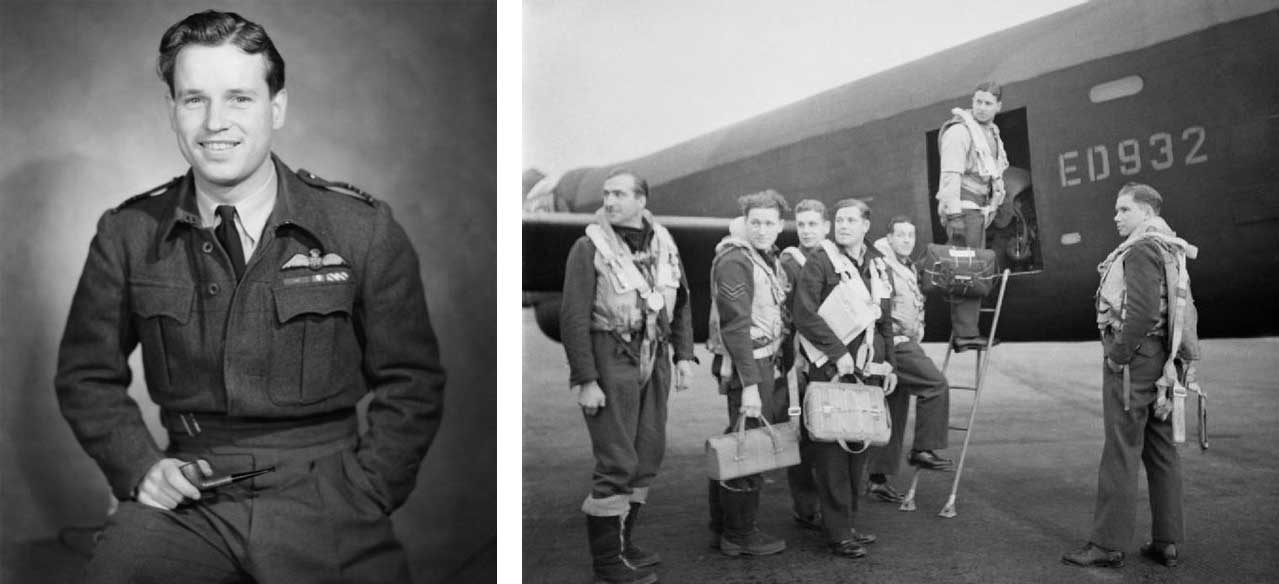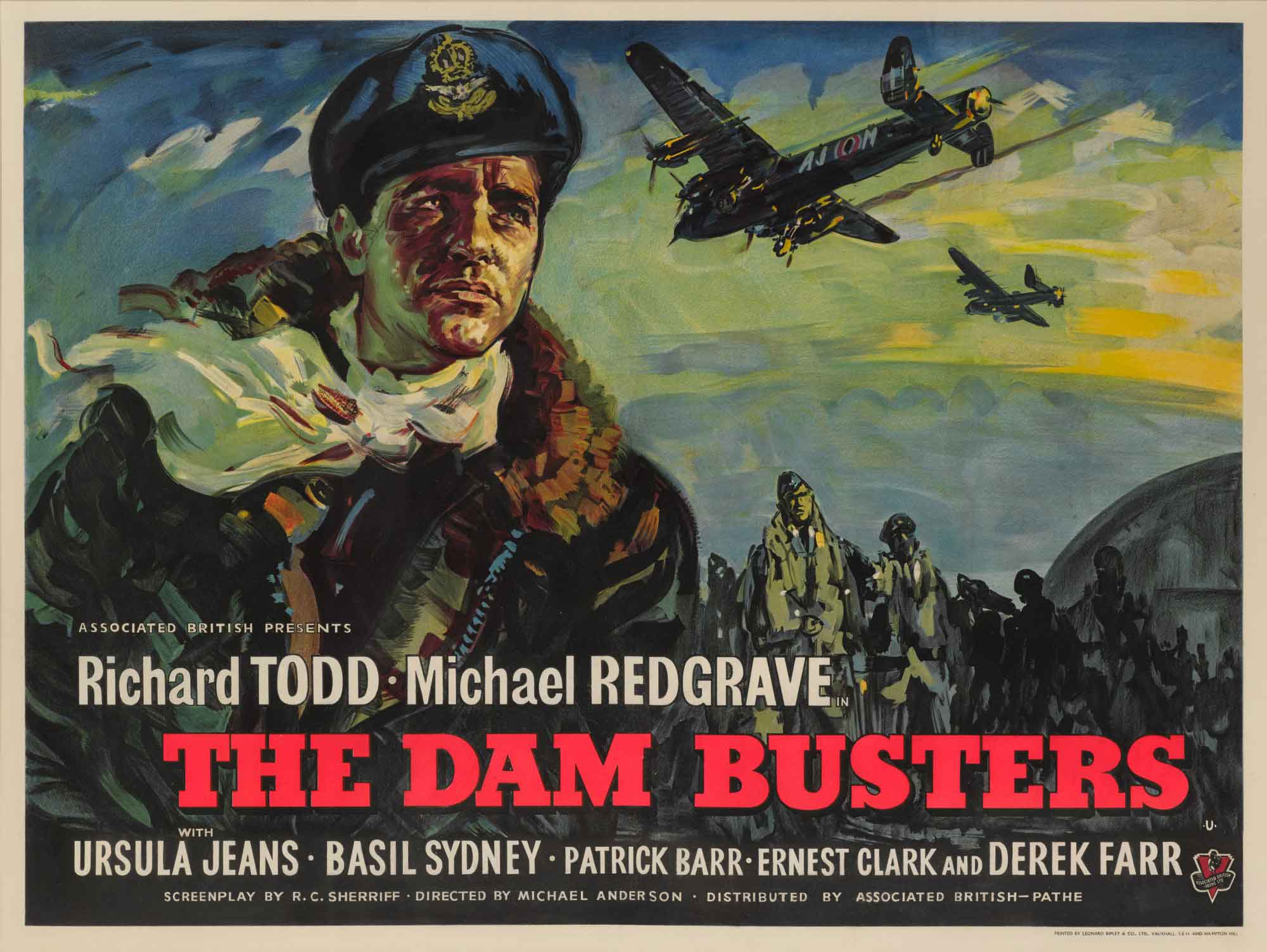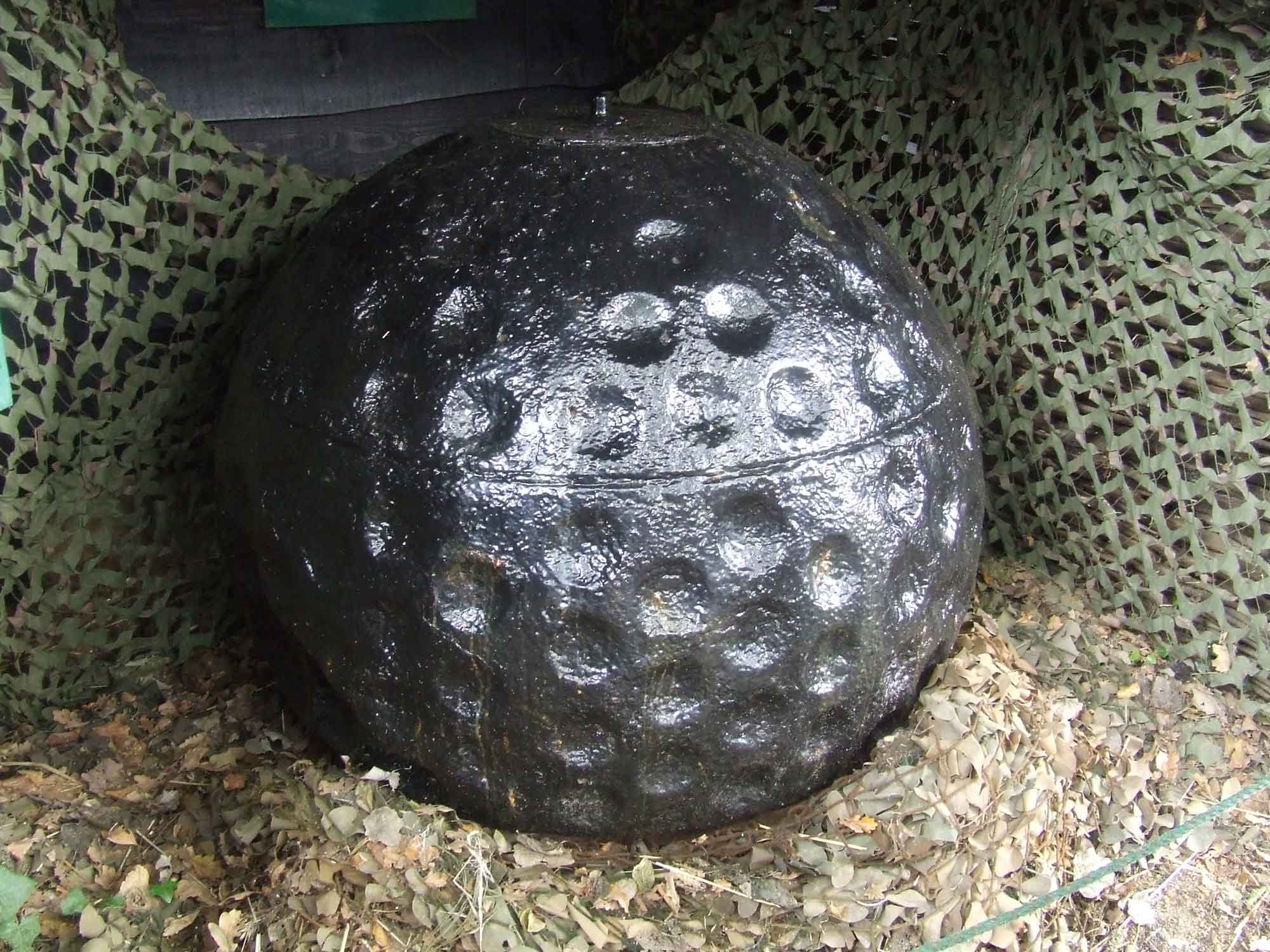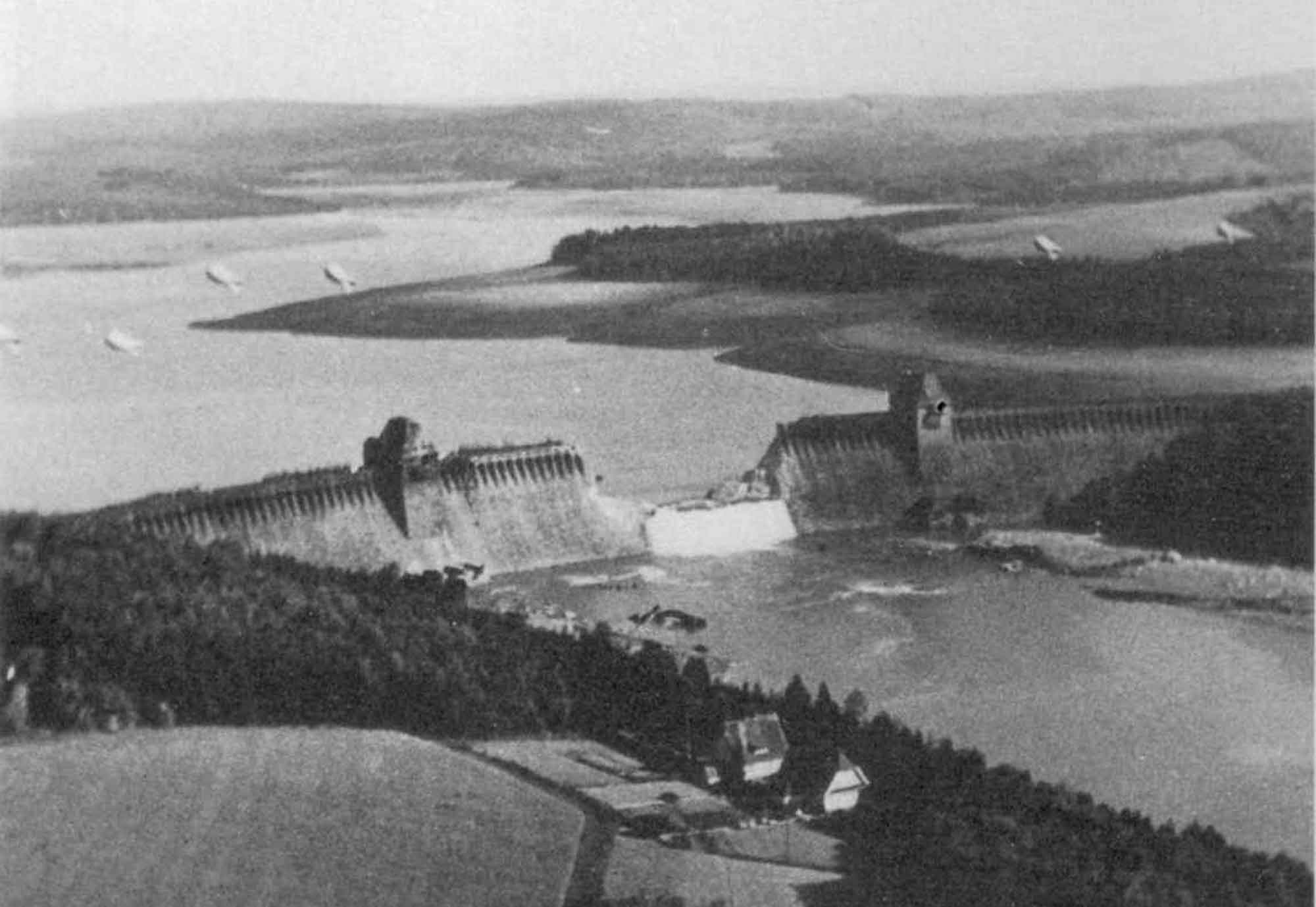The Mohne and Edersee dams were breached, causing flooding in the Ruhr and Eder valleys, while the Sorpe dam was relatively unscathed. Two hydroelectric power stations were destroyed and several others damaged.
The cost in life was high: some estimates reckon 1600 civilians perished, of whom as many as 1000 were forced labourers from occupied territories.
53 RAF crew were killed and three taken prisoner when eight aircraft were downed.

The mission, the Dambusters Raid, was officially known as Operation Chastise. There is some debate as to its military effectiveness, but its potency as propaganda seems undeniable. A fleet of Lancaster bombers led by 24 year-old Wing Commander Guy Gibson, flying at incredibly low altitude before dropping revolutionary, spinning bombs, triggered pride at home and unease in Germany.

In the 1955 feature film account of the raid, Barnes Wallis is played by Michael Redgrave. We see him catapulting golf balls at speed across a huge water tank; they behave much as a pebble would when skimmed across a pond. The movie has little time to explore the physics of the bouncing bomb, but the scene is a nod to the fact that all forms of the weapon Wallis developed had a generic title.
Golf mines.
The reason? One of the bomb’s distinctive features was back-spin. This improved the height and stability of its journey towards a target and made it more controlled and therefore accurate. The bombs used 80 years ago were large cylinders packed with high explosives, but some spherical prototypes also featured the sort of dimples used on golf balls to create turbulence, reduce drag and increase distance.
Back-spin, of course, is a normal feature of the flight of golf balls, generated by the manner in which they are struck by a golf club.
Just as good golfer can use back-spin to bring the ball to rest close to the hole, the key for Barnes Wallis was to calculate the speed, angle and back-spin of the bombs so they hugged the water and ended their journeys right beside the dams, and then rolled down close to the structures before detonating at a depth of 10 metres. Back-spin would also help the devices remain in proximity to the dams.
The Germans had suspended nets from the surface of the water to foil attacks by aircraft carrying torpedoes - hence the need for a type of bomb that could skip over them. But first vital calculations had to be made.
As Steve Haake, Professor of Sports Engineering at Sheffield Hallam University, writes: “The full scale experiments carried out by Wallis and the aircrews are frightening to see – twin-engined Mosquitos or Lancaster Bombers carrying out experiments with seriously large spinning spheres and cylinders, sometimes fatally. Their experiments showed that the optimum impact of the 4,200 kg cylindrical bomb was around 100 m/s (225 mph) at 7° to the water with about 8 revolutions per second of backspin.”

History does not record if the location where Barnes Wallis did much of his wartime work could have inspired his golf mines.
Burhill Golf Club in Walton on Thames, Surrey, was founded in 1907, only to find itself completely taken over 33 years later by the Ministry of Aircraft Production. Its splendid Georgian clubhouse became the new home of the design department of engineering conglomerate Vickers Armstrong. Leading the 200 employees was Barnes Wallis. The course itself had been occupied by grazing sheep and cattle in 1939 to contribute to the war effort.
Today Burhill offers two courses: The Old, which opened in 1907 and was designed by Willie Park Junior; and The New Course, which first welcomed players in 2001.

Among the bombs created at Burhill were the spherical Highball and cylindrical Upkeep. Highball had been designed to attack enemy shipping, and Upkeep would be deployed by Operation Chastise but, with eight weeks until a deadline determined by predicted high water levels at the target dams - and therefore maximum damage and disruption - the weapon remained in development.

There were other technical hurdles to leap. Dropping a golf mine at an altitude of just 18 metres or 60 feet while travelling at 240 miles per hour required the finest crews and a substitute for barometric altimeters which were insufficiently accurate so close to the surface. Two spotlights were mounted on the Lancasters, one under the aircraft’s nose and the other beneath the fuselage. At the correct height the two beams would converge on the water, and the crews mastered the technique by night flying repeatedly over reservoirs.
The bombs called Upkeep were made ready in time, and 617 Squadron took delivery of its payload on May 13th. Two days later Guy Gibson and Wallis briefed the two flight commanders, Squadron Leaders Henry Maudslay and “Dinghy” Young, and Flight Lieutenants John Hopgood and Bob Hay. The rest of the crews were brought up to speed the following day.

On May 16th, from 9.28pm, 133 aircrew in 19 Lancasters took off from a runway in Lincolnshire and set course for Germany’s industrial heartland. Guy Gibson was in the first wave and his aircraft was the first to attack the Mohne dam at 12.28am, though five planes had to follow suit before it was breached. The remainder of the force then targeted the Eder, which finally collapsed at 1.52am. Meanwhile, the other two waves tackled the Sorpe but it remained intact.

The men of 617 Squadron were lauded as heroes and Guy Gibson, who would be killed in action aged 26, was awarded the Victoria Cross for his leading role in the raid. 617 went on to become a specialist precision bombing unit, experimenting with new bomb sights, target marking techniques, and the delivery of colossal new ‘earthquake’ bombs also developed by Barnes Wallis. These were deployed against strategic targets like submarine pens and the battleship Turpitz.
These weapons were the forerunners of modern bombs known as ‘bunker busters’ - but despite the name they have nothing to do with the science of golf.
